Tennis players often ask what role the wrist plays in a topspin serve.
Does it snap or is it passive? In what plane does the wrist move when a player is applying topspin to the ball?
I’ve recorded my topspin serve in super slow motion at 240 frames per second and we will look at every detail of the wrist and hand movement.
Wrist Abduction and Adduction
So does the wrist snap?
No, definitely not. If the wrist snapped, we wouldn’t be able to impart topspin. The serve wouldn’t have good accuracy. And we wouldn’t have good power.
Anatomically, we can describe snapping the wrist in terms of extension and flexion.
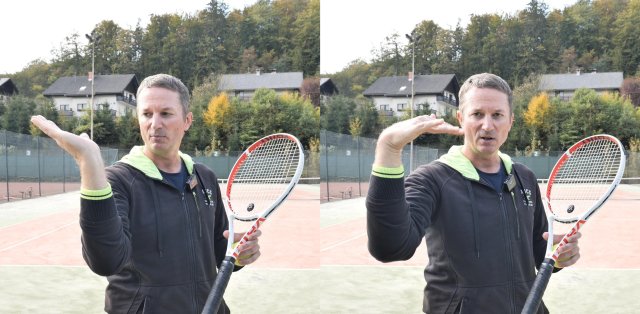
Wrist extension (left) and flexion (right). Wrist does NOT move like this on a topspin serve!
And as we make contact with the ball, the wrist is NOT moving in the extension-flexion plane.
But the wrist is not passive either. It is moving in the abduction-adduction plane.
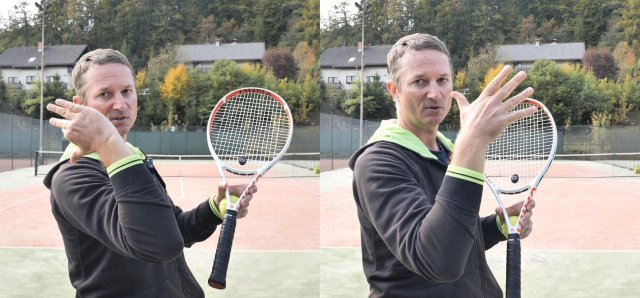
Wrist abduction (left) and adduction (right). The wrist ACTIVELY moves in this plane.
This wrist movement adds racket head speed—of course, in conjunction with all the other body parts that are contributing to the racket head speed during the movement.
Let’s take a look at the wrist movement now by focusing on a few images, starting our inspection just before contact and ending just after contact.
1. Wrist before contact
Just before we contact the ball, the wrist is in the abduction position because the weight of the racket has pulled it downward into abduction.
This pull happened a few split seconds earlier as the arm and the racket looped behind the back.
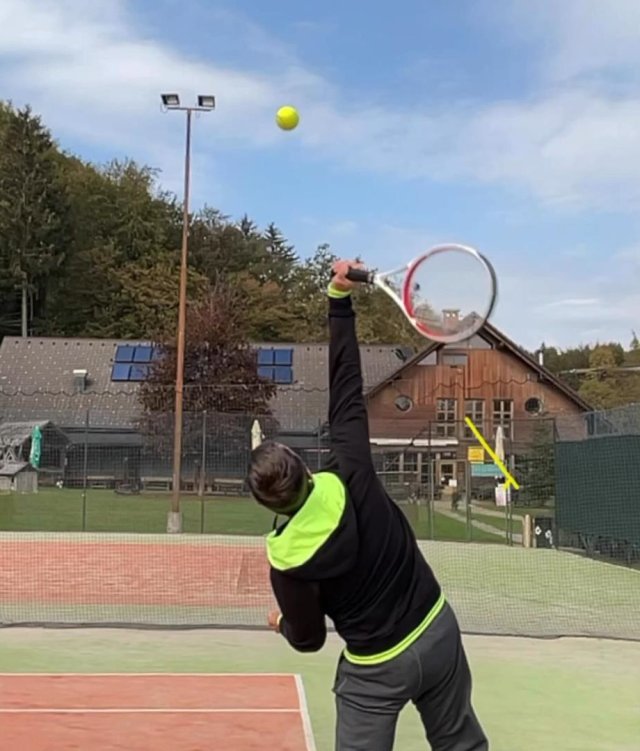
It’s at around this stage in the topspin serve where the wrist starts to become very active.
Now that the arm is accelerating upward because of previous leg drive and hip and trunk rotation, the wrist can start to become more active and help me to pull the racket head up into the contact point so that I can use the strings to impart topspin to the ball.
This means that the wrist has begun a transition from abduction to adduction.
What really helps here to accelerate the racket is the index finger support. See video below…
2. Wrist on contact
On contact, the wrist is very stable and is in transition from abduction to adduction. There is no extension or flexion occurring.
We are now very active with the wrist, since the goal is to accelerate the racket head very fast.
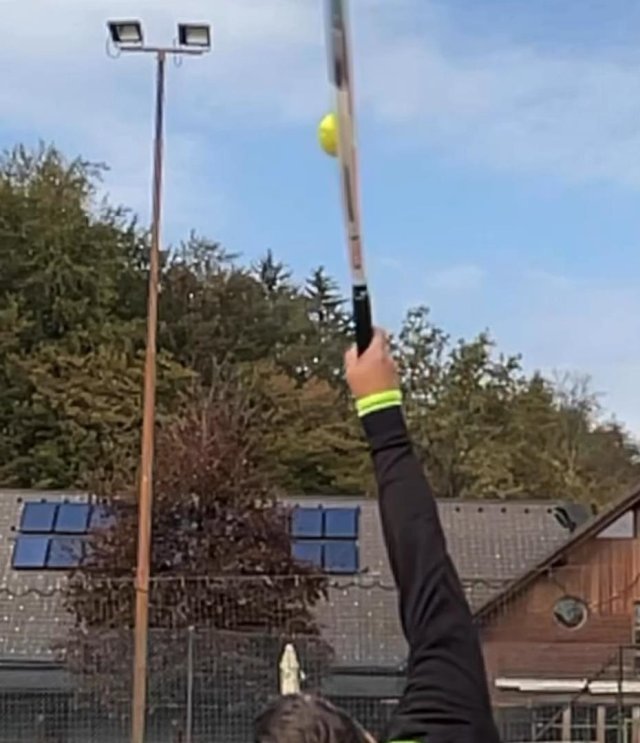
The wrist is stable and still actively driving the racket head up and diagonally across the ball.
All other body parts have executed their movements, and the arm is almost completely extended.
So this leaves the wrist as the last link in the kinetic chain.
3. Wrist after contact
A few split seconds after contact, the wrist is in the adduction position, having reached the end of its range of motion.
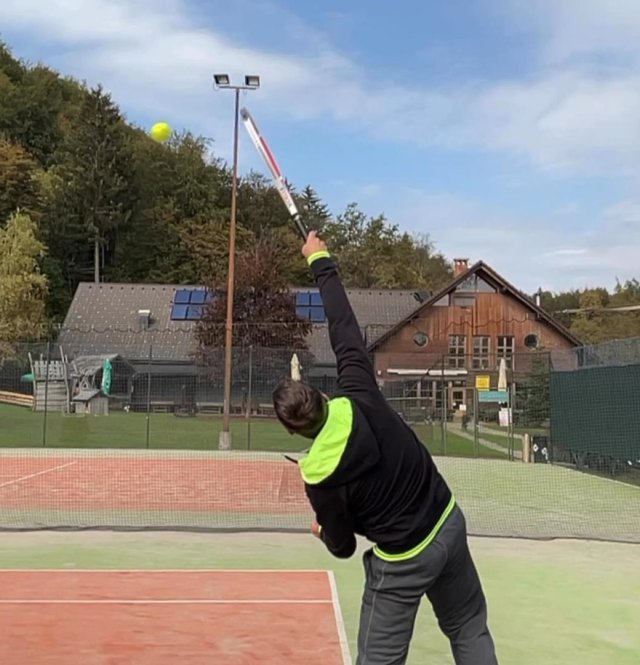
The wrist is still driving the racket head in the same plane as before contact…
A few hundredths of a second later, we start to see the familiar pronation position, which can visually deceive you into believing that the wrist is now snapping.
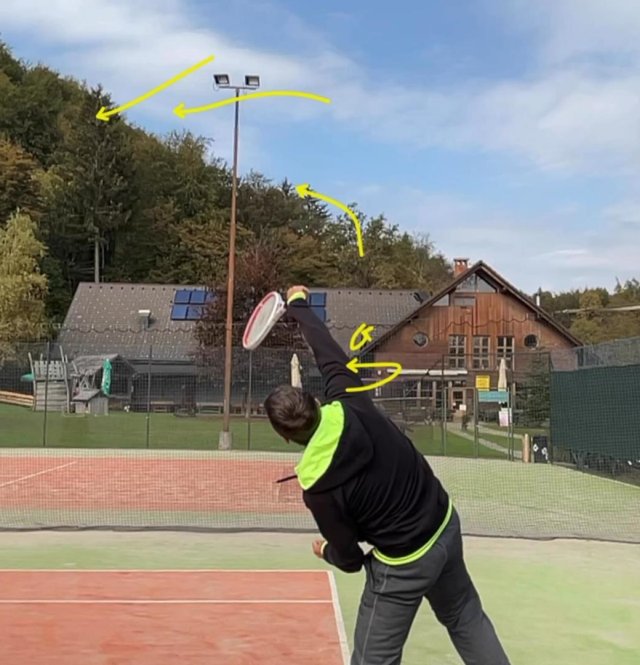
This image often deceives players into thinking that it’s the wrist snapping but it’s not.
But it isn’t. It’s still in a very stable position in relation to the forearm.
What does start to happen is that the internal shoulder rotation and pronation continue to twist the arm, and this results in that apparently broken line between the arm and the racket head.
How to Learn Correct Wrist Movement for a Topspin Serve
The purpose of this video article is not to teach you how to move the wrist correctly.
The purpose is to give you peace of mind if you happen to be one of those very analytical tennis players who must know exactly what happens with the wrist during a topspin serve.
You don’t really need to know exactly how each body part moves during the split-second of a tennis stroke to do a good job with the topspin serve.
You can’t consciously control such minute and rapid movements in any case.
You do need to trust and practice the drills that your coach explains to you or that I explain to you in my free videos and paid courses.
We learn complex movements through drills that break them down into smaller chunks. We learn step-by-step over a long period of time.
To get you started on the right track, use the drill that I demonstrate in the video below…
But if you want to really master the topspin and slice serves with exact step-by-step progressions, consider investing in the Second Serve Mastery video course.
Or alternatively sign for a free course below which will quickly put you on the right track to a better topspin serve.





Very cool! I especially appreciate the point that we can’t control all of these little links by thinking analytically. Instead do the drills and the body will make it happen…
Exactly right, Spencer. I always give an example of how tennis coaches can teach 9 or 10 year old kids correct serve technique.
The kids don’t ask questions nor they want to understand nor they actually can, this is all too complex.
So all they do is follow instructions on how to perform the exercises and then the movements gradually develop into correct ones…